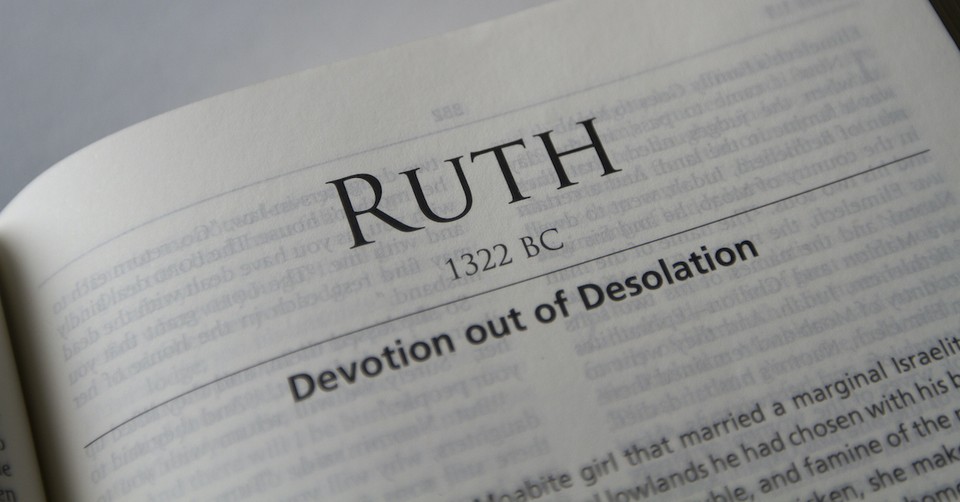Why Is it Popular to Read Ruth During Shavuot?

Let’s be honest; we Christians have a tendency to be in a bubble. When I am studying the Old Testament, this bubble is often popped. A few weeks ago, I was writing something on the book of Ruth. In my research, I discovered that even to this day, Jewish people read the Ruth during Shavuot.
Much to my shame, I had to admit that I didn’t even know what Shavuot was. But I figured it might be important in my understanding of Ruth, to see how it was used by those of a Jewish faith. I did a deep dive to learn about Shavuot and the book of Ruth is used in its observance. Perhaps you share my ignorance; if so, you might find this helpful.
What Is Shavuot?
Shavuot (pronounced shuh-voo-owt) is a two-day holiday that combines two major events within Jewish life and history. It commemorates the giving of the Torah on Mt. Sinai as well as the early summer grain harvest.
Exodus 23:16 establishes this as a feast that the people must keep. Originally the feast seems to have been a local observance, where farmers would present the first fruits of their harvest to a local shrine. In Exodus, there is no precise date given for the observance.
By the time of Deuteronomy, there was a more precise date given for the observance. It was to be observed seven weeks after the sickle “is first put to the standing grain” (Deut.16:9). This is where the title “Feast of Weeks” comes from. The command in Deuteronomy also centered the festival in a centralized location. The festival was a way of dedicating the harvest to the Lord and showing gratitude for His provisions.
Eventually, after the Babylonian exile, the festival became connected to the giving of the Law. How did that happen? Eerdmans Dictionary of the Bible gives an explanation:
This connection is, in all probability, based on the combination of two texts from the OT. Exod. 19:1 reports that the Israelites entered into the wilderness of Sinai in the third month. 2 Chron. 15:8-15 describes a national ritual that was observed by Asa in the third month in which the people entered into a covenant with Yahweh. Thus, the third month, the month in which the Festival of Weeks was observed, became the occasion for making covenants and oaths (pg. 1373).
How, then, does all of this connect with the book of Ruth?
How Does Ruth Relate to Shavuot?
The Book of Ruth is traditionally read on the second day of Shavuot. But why? What does the story of Ruth have to do with the Feast of Weeks?
First, we should know a little about the book of Ruth. In some ways, Ruth isn’t entirely about the book’s namesake. It is aptly titled because it follows the story of a young Moabite woman (Ruth) and her devastating loss of a husband and all of the security which it brings. But the Book of Ruth is also about her mother-in-law, Naomi. Naomi and her husband left Jerusalem because of a famine. And while there, outside the Promised Land, they were absolutely broken by life. Naomi became embittered. There seems to be little hope.
Boaz, who ends up being a kinsman redeemer for Ruth, enters into the story out of nowhere. While gleaning in the fields (that is what the poor would do), Ruth encounters Boaz. It is here, when all hope seems lost, that God provides one who can procure rescue not only for Ruth but also for Naomi. And it will be through the marriage of Ruth and Boaz that King David will come.
There are a few obvious connections, then, to the story of Ruth and Shavuot. First, the setting is similar. Ruth has an agricultural setting. The three religious pilgrimage festivals were centered around the agricultural calendar. Passover is the time of barley harvest, the Feast of Weeks is the end of the wheat harvest and the beginning of the fruit harvest, and the Feast of Tabernacles is at the end of the fruit harvest. And the story of Ruth is filled with agricultural terms like threshing, winnowing, gleaning, reaping, sowing, etc. Most of the narrative of Ruth takes place during the period of Shavuot.
Secondly, we see a connection between Ruth’s decision to leave her own people and follow Naomi. Listen to Ruth 1:16-17,
But Ruth said, “Do not urge me to leave you or to return from following you. For where you go I will go, and where you lodge I will lodge. Your people shall be my people, and your God my God. Where you die I will die, and there will I be buried. May the Lord do so to me and more also if anything but death parts me from you.”
This is the language of the covenant. Ruth is a picture of the first reception of the Mosaic Law. The National Library of Israel makes this connection:
Firstly, because it was only upon the Jews receiving the Torah that they became ready to teach it to all those who wanted to be part of the faith, like Ruth; and seeing Naomi accept Ruth should teach us to accept all people who wish to take on the mitzvot for themselves. Secondly, in receiving the Torah at Mount Sinai, the People of Israel were essentially converting to Judaism, as they were deciding to take on the Jewish laws for the first time. Because Ruth chose to convert to Judaism, she merited to become the ancestor of the Messiah, and similarly, upon accepting the Torah, the Jewish people merited to become the Children of God.
Others mention that King David forms the connection between Ruth and the observance of Shavuot. Ruth would have been the great-grandmother of King David. And “according to a post-biblical Jewish tradition, was both born and died on Shavuot.”
One final connection has to do with the kindness, generosity, and compassion which serve as themes throughout the book. Ruth is a model of many of these things. And it is through these virtues—and often in the context of intense suffering—that Torah is received.
These are a few of the reasons why those of a Jewish faith would read Ruth during Shavuot. Why, though, does this matter for Christians?
How Do Christians Use the Book of Ruth?
Many of the same themes which encouraged Jewish people during the Feast of Weeks intersect with followers of Jesus. We, too, value compassion and kindness. We also value the giving of the Law—as well as the fulfillment of the Law. We believe that the Messiah who came through the line of David is Jesus Christ. And we believe that He is the fulfillment of the Torah, which leads to a special connection to the Feast of Weeks and the Book of Ruth.
Another name for the Feast of Weeks is Pentecost. It takes place exactly 50 days after the feast of first fruits. Pentecost is when the Holy Spirit was given to followers of Jesus. And it is the Holy Spirit who lives within our hearts, the seal of the new covenant, who empowers us to follow the Torah.
Had the story of Ruth not happened—and Ruth and Boaz never connected—then we would not have King David. And if we didn’t have King David, we wouldn’t have Jesus, our Messiah. For us, we might celebrate Pentecost more than the Feast of Weeks. But we should consider these connections. Perhaps we, too, should reflect upon the loving-kindness of God throughout the book of Ruth during the season of Pentecost.
Sources:
Frank H. Gorman Jr., “Weeks, Feast of,” ed. David Noel Freedman, Allen C. Myers, and Astrid B. Beck, Eerdmans Dictionary of the Bible (Grand Rapids, MI: W.B. Eerdmans, 2000), 1373.
Photo Credit: ©Sparrowstock
Mike Leake is husband to Nikki and father to Isaiah and Hannah. He is also the lead pastor at Calvary of Neosho, MO. Mike is the author of Torn to Heal and Jesus Is All You Need. His writing home is https://mikeleake.net and you can connect with him on Twitter @mikeleake. Mike has a new writing project at Proverbs4Today.
Originally published May 25, 2023.







